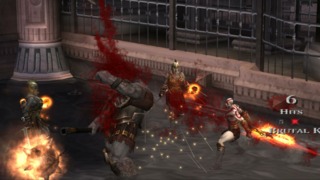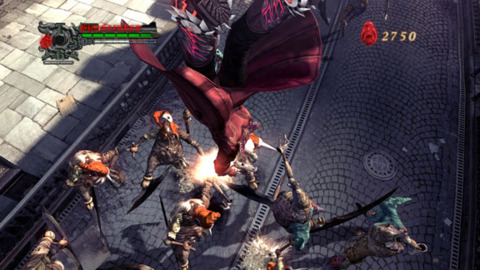Overview

A term that can be used to refer to RPGs that focus more on the action (see Action RPG and Real-Time Combat), or mainly action brawler games which focus on melee heavy combat with elaborate combos against hordes of enemies.
History

The genre took form in the 6th generation of consoles. After the dark age of brawlers in the late nineties, the processing power of the newer platforms created a fertile ground for action-oriented titles. Other belt scrolling action games were already creating larger arsenals of weapons and powers for players to use against enemies, but the new school of action titles brought as its signature bloody fights with a variety of swords, blades, gauntlets and other types of melee weapons combined with supernatural protagonists with magic abilities that made every fight a joy for young and old players.

Games in this genre were influenced by other tridimensional Action-Adventure games like Onimusha: Warlords, Prince of Persia: The Sands of Time and The Legend of Zelda: Ocarina of Time, bringing a lot of those games already thought out character movement, camera direction, player progression, sense of exploration and puzzle-solving. Those games were cited numerous times by David Jaffe, creator of the God of War series and director of the first game, as its most heavy influences and that at first God of War was supposed to be a more adventurous title with more straightforward combat before it became what it is.

The genre became notorious for its punishing difficulties balanced with extremely satisfying enemy-killing action. A larger variety of weapons gave players more expression in enemy encounters as differently from RPGs, weapons were not stronger damage-wise between each other, but had different offensive options and manoeuvrabilities. Gated combat from old-school beat 'em ups and the mashy nature of combat continued but enemies and attacks evolved to feel more complex, skill-based and requiring player dexterity as players were incentivized to use different options for different enemies and situations. As its arcade roots, this type of game usually rewards replayability with some type of grading system, multiple difficulty options and lots of unlockables to reward multiple playthroughs.
Mixing with other genres

In actuality, the second Dynasty Warriors game, the one that changed from a 1v1 fighting game to the format that it is known today, predates other well-known titles in this genre like the first Devil May Cry. But as it was focused on strategic elements of defeating generals and conquering battlefields, the series evolved more gradually to its other contemporaries that had a more linear and level-based room by room design. So besides still being synonymous with the term hack and slash, the Warriors/Musou franchise is considered to have its own spin to it. The Dynasty Warriors games also got versions with even more strategic elements called Extreme Legends and even spawned its own spin-offs and different themed variations like Samurai Warriors. Other developers also applied their own spin to this idea like Ninety-Nine Nights and Sengoku Basara games. Korean developer Phantagram also made their own spin to this idea of combining a war strategy game with sections of 3D hack and slash combat with Kingdom Under Fire: The Crusaders. Other titles that try to blend RTS and hack and slash include: Guilty Gear 2: Overture, Undead Knights and Brütal Legend.

There are also other genres like Action RPGs that adopt the more combo-heavy, stylish and exaggerated nature of Hack and Slash games. Nier Automata is one of the most notorious examples of it, being developed by Platinum Games. But also Scarlet Nexus, Tales of Vesperia/Xillia 2/Berseria/Arise feature more combo-heavy combat systems. Other 2D titles like Odin Sphere, Muramasa: The Demon Blade, Dragons Crown also feature such elements.
Notable Franchises
Some franchises have helped the hack and slash genre in making a name for itself over the years. The following is a list of some of the most notable, in alphabetical order:
Log in to comment